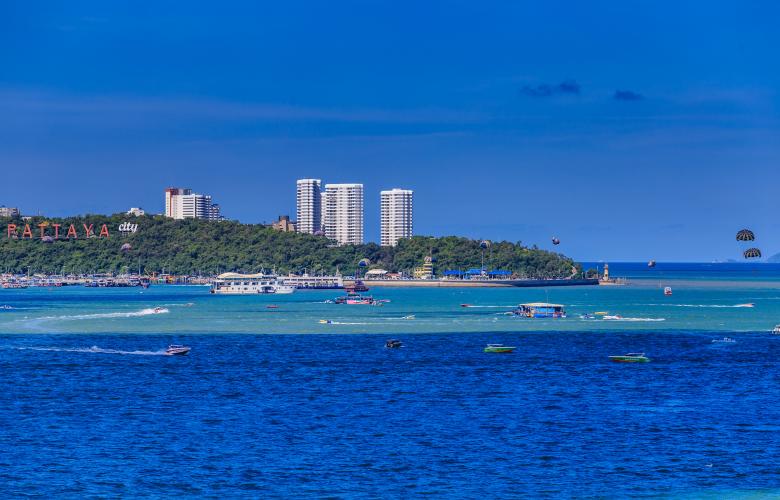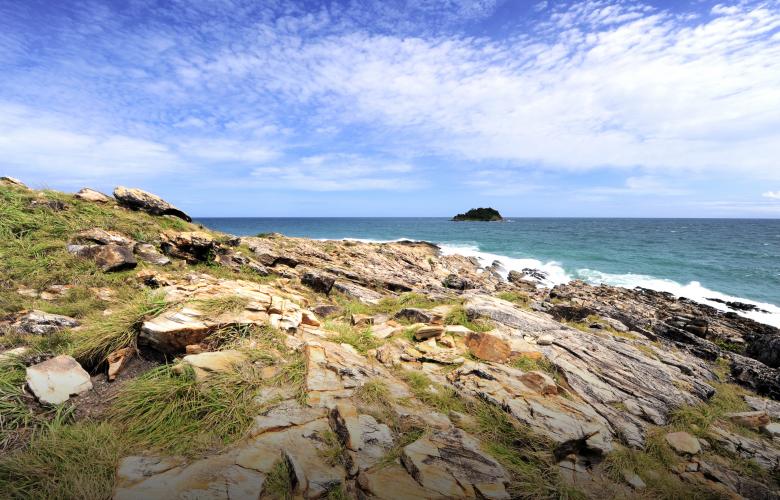- Bangkok
- Central Thailand
- Eastern Thailand
- Northeast Thailand
- Northern Thailand
- Southern Thailand
- Southern Thailand - Chumphon
- Southern Thailand - Krabi
- Southern Thailand - Phang Nga
- Southern Thailand - Phuket
- Central Island - Phuket
- Central West Coast - Phuket
- Bang Tao Beach - Phuket (Central West Coast)
- Emerald Bay - Phuket (Central West Coast)
- Kalim Beach - Phuket (Central West Coast)
- Kamala Beach - Phuket (Central West Coast)
- Laguna - Phuket (Central West Coast)
- Layan Beach - Phuket (Central West Coast)
- Patong Beach - Phuket (Central West Coast)
- Surin Beach - Phuket (Central West Coast)
- East Coast - Phuket
- North West Coast - Phuket
- Small Islands - Phuket
- South West Coast - Phuket
- Southern Coast - Phuket
- Southern Thailand - Satun
- Southern Thailand - Songkhla
- Southern Thailand - Surat Thani
Eastern Promise
Thailand’s eastern provinces and northeastern Isaan region are part industrial heartbeats, part beach playgrounds, part agricultural rice bowl, and almost all traditional charm
By Simon Wood
Contact
Jan 5, 2018
The importance to Thailand of these two eastern powerhouses, in terms of industrial and agricultural outputs, and tourism, can’t be underestimated. They both represent vital cogs in the country’s infrastructure and in many ways have come to symbolise the dynamic adaptability driving its progress.
Southern Comfort
Down south, the eastern provinces, sheltered by the Gulf of Thailand’s coastline, have been described as some of the country’s most important in terms of what they offer both economically and in tourism. It may not have the glamour of other regions, but its long coastline is home to several busy commercial ports and also acts as the base of the Royal Thai Navy.
These seaports are lifelines and gateways to the world for businesses in the industrial areas that have grown up here – and despite this industrial activity there is still more than enough room for tourist playgrounds catering for both Thai and international visitors. It’s the nearness and accessibility to Bangkok that’s helped the region develop in commercial and leisure terms. Weekends in particular see a huge movement of Thais to the nearby beaches from Bangkok. Bangsaen beach in Chonburi province - and of course brash Pattaya - are important areas for Thai relaxation. For many tourists, these beaches may seem a bit tame, and lacking in the comforts they are used to. But with the eastern coast keen to get a slice of the tourist cake, facilities are gradually being updated to attract more overseas visitors.
One particular advantage the eastern coast has is its climate - most of it is in the bay of the Gulf of Thailand, sheltered to the east by Cambodia and the west by Myanmar. This means it manages to escape much of the adverse weather that can affect the rest of the country.
There’s also easy access to some interesting and well-frequented islands off the coast, such as Ko Chang, Ko Samet, and Koh Larn - the Coral Island off Pattaya with fine
beaches and scuba diving facilities. Back on dry land, several world class golf courses are also high on the Must-Do lists of visitors.
The provinces of the eastern seaboard of Thailand fall in this order, from Bangkok through to Trat, the last province before Cambodia:
Chonburi Province - The Chonburi coastline stretches north to south from Bangkok to Rayong; although it’s a well-industrialised area, it shares this with other areas of outstanding scenic beauty.
Rayong Province - Another home to industry, Rayong has the mighty Mao ta Put Industrial Estate - the largest in Southeast Asia. But there are also several beaches and similar to Chonburi, Rayong has areas as diverse as its natural parks, many historical buildings, and access to and from one of the most popular islands - Koh Samet.
Chanthaburi Province - Known as Moon City, Chanthaburi is renowned for fruit production and locally-mined gems in equal measure. Its coastline has some good beaches and scenic parks, and there’s a busy Gem Market. The area bristles with historical events, commemorative monuments and edifices; it's all slightly laid-back, with surprising discoveries to be made; among them the National Park of Namtok Phlio, with one of the best waterfalls on the east coast.
Trat Province - The last stop before entering Cambodia, Trat is idyllically quiet, with beautiful beaches, countryside, and cultural interest; a memorable snap shot of rural Thailand.
It’s Historic Up North
Isaan is Thailand’s largest region, consisting of 20 provinces on a vast tableland representing a third of the country’s landmass, that sweeps across the northeast.
It’s on the Khorat Plateau, bordered by the Mekong River along the border with Laos to the north and east, by Cambodia to the southeast and to the west it’s separated from northern and central Thailand by the Phetchabun Mountains.
In stark contrast to some of the eastern seaboard’s modern industrialisation, Isaan is a glorious step back in time to more simpler eras of traditional agricultural techniques and village handicrafts.
In fact, it’s been described as Thailand’s forgotten backyard, with authentic glimpses of the Thailand of old to be seen around almost every corner. There are vistas of rice paddies stretching as far as the eye can see, water buffalos wade in muddy fields, silk weavers work
their magic on looms at home, and pedal-rickshaw drivers pull their passengers along city streets.
There’s also the fact that the local language, food and culture owe more to neighbouring Lao than Thailand, with additional sprinklings of Vietnamese and Khmer into the bargain.
All this melding of culture and history - it changed hands between the Khmers and Laos many times over the centuries - means Isaan is home to some of Thailand’s most impressive historic sites, National Parks and festivals.
Prime attractions are Khao Yai National Park and the collection of Khmer ruins - those at Phimai are the most accessible, but many visitors also make the effort to visit either Phanom Rungor Khao Phra Viharn as well, both occupying spectacular hilltop locations.
There are relics of an even earlier age, prehistoric cliff-paintings that draw tourists eastwards to Khong Chiam, set between the Mekong and Mun rivers.
Five huge northeastern festivals during the year pull in massive crowds: in May, Yasothon is the focus of its bawdy Rocket Festival; the end of June or beginning of July sees the equally raucous Rainmaking Festival of Phi Ta Kon in Dan Sai near Loei; in July, Ubon Ratchathani hosts the extravagant Candle Festival; in October, while the touristy Elephant Round-Up is staged in Surin in November.
Some regional highlights of Isaan include:
Buriram Province – at the southern end of the Khorat Plateau, Buriram Province has several extinct volcanoes surrounding it and it’s southern limit is a mountainous area between the Sankamphaeng Range and the Dângrêk Mountains.
About a thousand years ago, the area that makes up today's Buriram Province was under the Khmer Empire and many ruins remain from that time. The largest, standing on an extinct volcano, is in the Phanom Rung Historical Park and according to an inscription
found there, its local ruler recognised the authority of the Khmer king. Buriram was formally incorporated into Thailand as a province with its own governor after administrative reforms in the late 19th century.
It’s renowned as a city of sport, with Buriram United one of the most successful football teams in Thailand. Its home stadium is the Chang Arena, the largest club-owned football stadium in the country. Chang International Circuit, an FIA Grade 1 and FIM Grade A racing
circuit is near the Chang Arena just outside town.
Loei Province – is a sparsely populated, mountainous province that borders Laos across the Mekong River. Its geographic features mirror those of the rest of Thailand’s northern region, with mountains, cool temperatures and fog.
Ideal for hiking, this province offers myriad explorations among its pristine landscapes, including mountainous and challenging Phu Kradung National Park, where it’s said couples can prove their love by going to the peak of Phu Kradung.
Once atop Phu Kradung, hikers can view scenic sunrises and views of fields and mountains at the Pha Nok Ann viewpoint. Along the trails there are heather flowers whose full blooming season is during March and April.
At the other end of the day, the most popular viewpoint to experience sunsets is Pha Lomsak. Further attractions in Phu Kardung for hikers are trail walks to see Anodard Pond, Phen Waterfall and Pha Yearb Mek. It’s reckoned that a full three days are needed to explore every attraction in Phu Kardung.
But if climbing around Phu Kradung is strenuous, there’s the more accessible Phu Ruea National Park, featuring a large pine tree field with vehicular access to the campsite.
Ubon Ratchathani – is Thailand’s easternmost province; part of that fame is that it draws New Year visitors to experience the country’s first sunrise of the year.
It’s also the largest province in the northeast, with a wealth of interesting and delightful places to visit, such as Pha Taem National Park, famous for its prehistoric rock paintings; Sam Pan Boak or the Grand Canyon of Thailand; Huai Sai Yai Waterfall, one of the most stunning waterfalls of the region; Kaeng Saphuee Public Park; Wat Tham Khuha Sawan; and Wat Phrathat Nong Bua.
Ubon Ratchathani’s provincial city is also called Ubon Ratchathani - but Ubon for short and to distinguish it - and is one of the four major cities of Isaan, also known as the Big Four of Isaan. The city lies on the Mun River and its name means Royal Lotus City.
The Candle Festival on Khao Phansa Day, at the start of the eighth lunar month, marks the start of Buddhist Lent and is the most important event of the province, when huge and elaborately carved candles are paraded throughout the city.
Popular souvenirs from Ubon Ratchathani include hand-woven cotton cloth, silk cloth, folk pattern pillows, and brass wares. Food lovers will take great delight in white pork sausage, Thai sweet sausage, and northeastern-style fermented sausage.
Source: thaitourism.org
Important Information:















